Photo by Richarles Moral from Pexels
The LRT1, LRT2 and MRT3 have undeniably improved the commuting experience for most Filipinos living in Metro Manila. These railway systems started operations in 1984, 2003, and 1999, respectively. Unfortunately, the past couple of years have also seen the breakdown of these transportation systems. The result? Packed trains with poor air conditioning, long queues, and countless maintenance issues.
Still, commuters choose to take these poorly maintained trains over other transportation options for fear of getting caught in standstill traffic. In fact, the 2014 data of the Department of Transportation (DOTr) shows that more than 480,000 people rode the LRT1 daily; 200,000 for LRT2; and 460,000 for MRT3. That’s a total of 1.14 million passengers, or about a quarter of Metro Manila’s labor force for that year.


While there is no escaping the long lines and influx of passengers on a daily basis, it’s handy to know which stations get the most passengers at certain times of the day. The map below shows the daily number of people who are either boarding or disembarking from the three transit systems. Generally, the highest passenger movement occurs on or near the lines’ last stops. Take, for example, Taft Avenue, MRT3’s southern end: it’s the busiest, with more than 154,000 daily entries and exits, which is about three times the average of all stations. This number is almost eight times the capacity of the Mall of Asia (MOA) Arena!
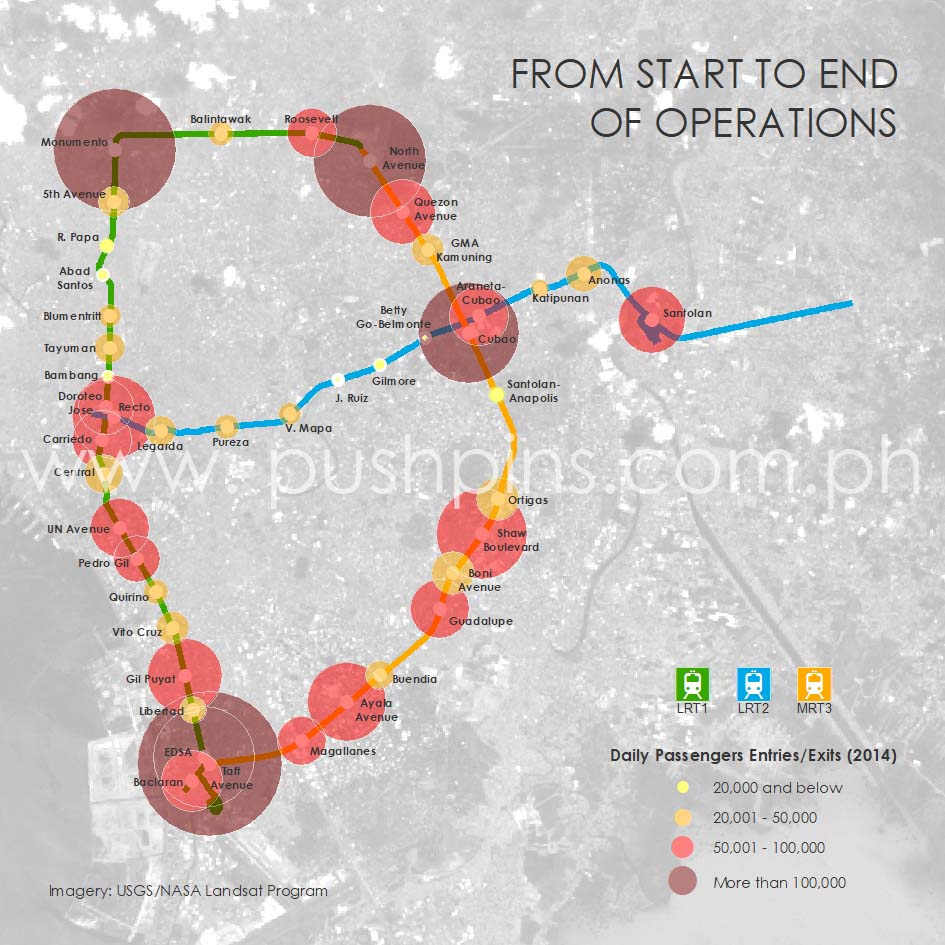
Good Morning?
Commuters flock to the train stations as soon as morning operations begin—a wise commuting hack since early morning gets the least passenger traffic. Before the clock strikes 6am, just 4% of the day’s total number of passengers are using the trains. Hit the snooze button a few times, and you’ll miss this window of opportunity.
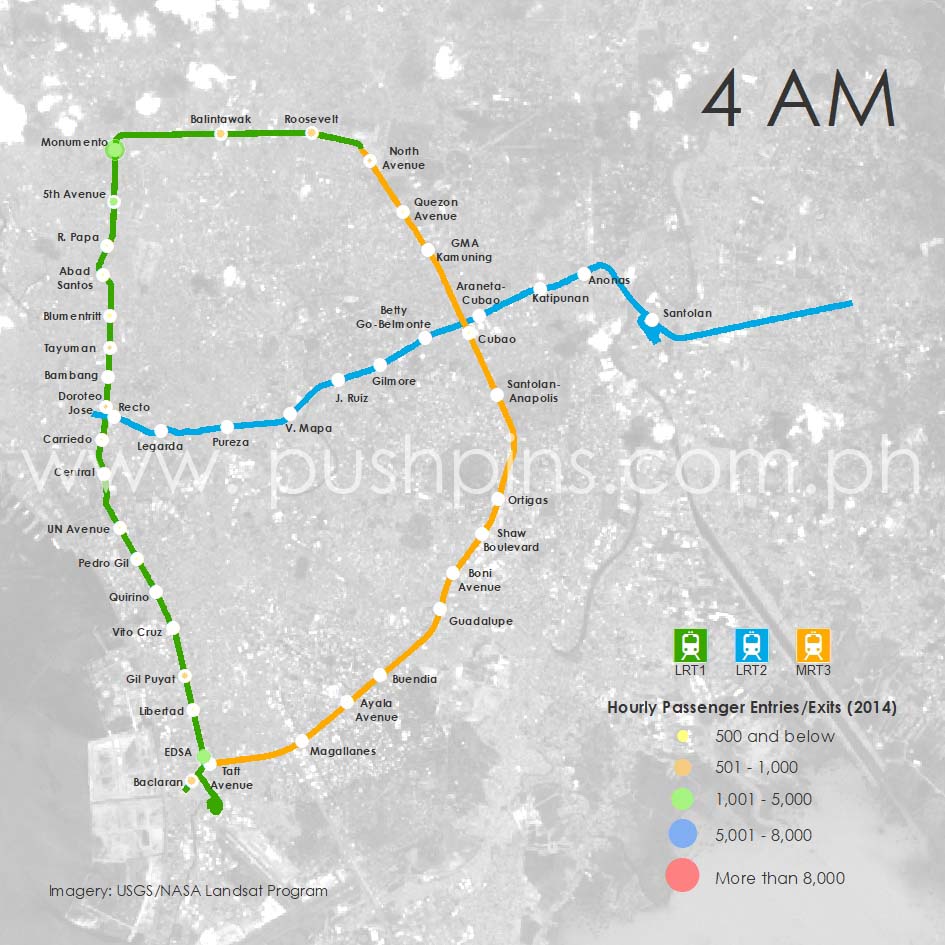
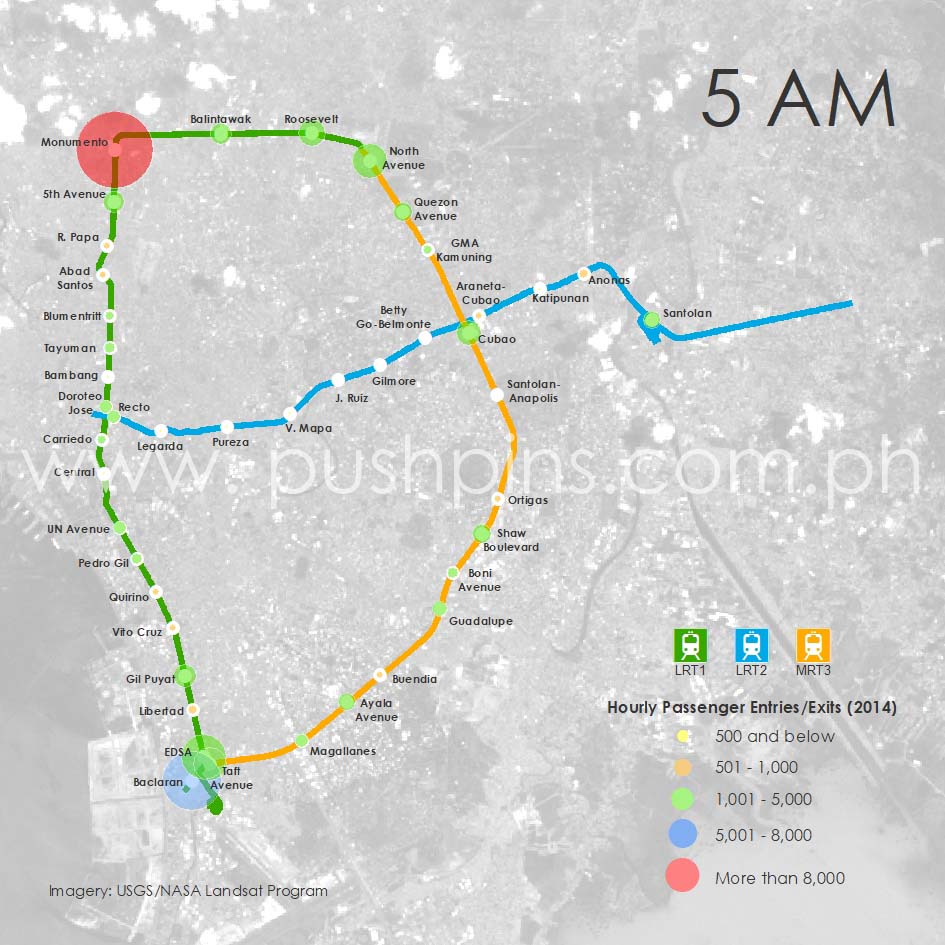
By 6am, passenger movements begin to swell at the lines’ end points. This trend continues as the morning rush approaches. Most stations get packed to the brim come 7am, and then slowly declines until noon. The set of images below illustrates passenger volume at these hours.
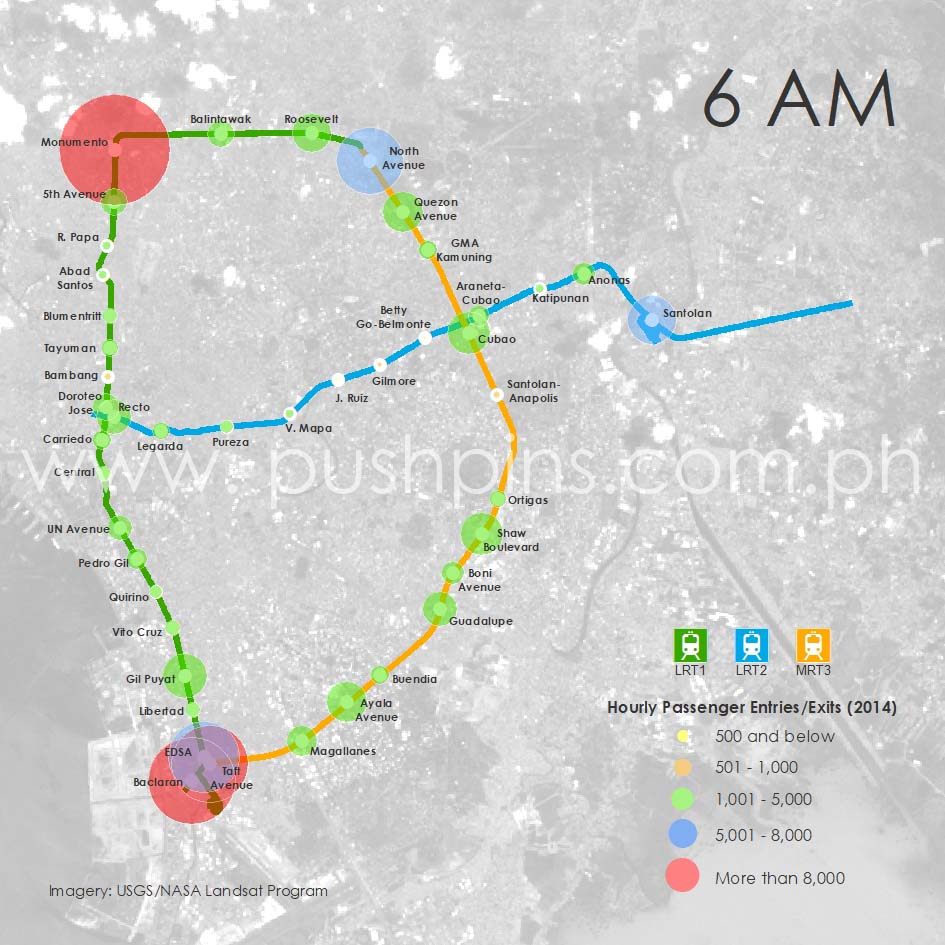
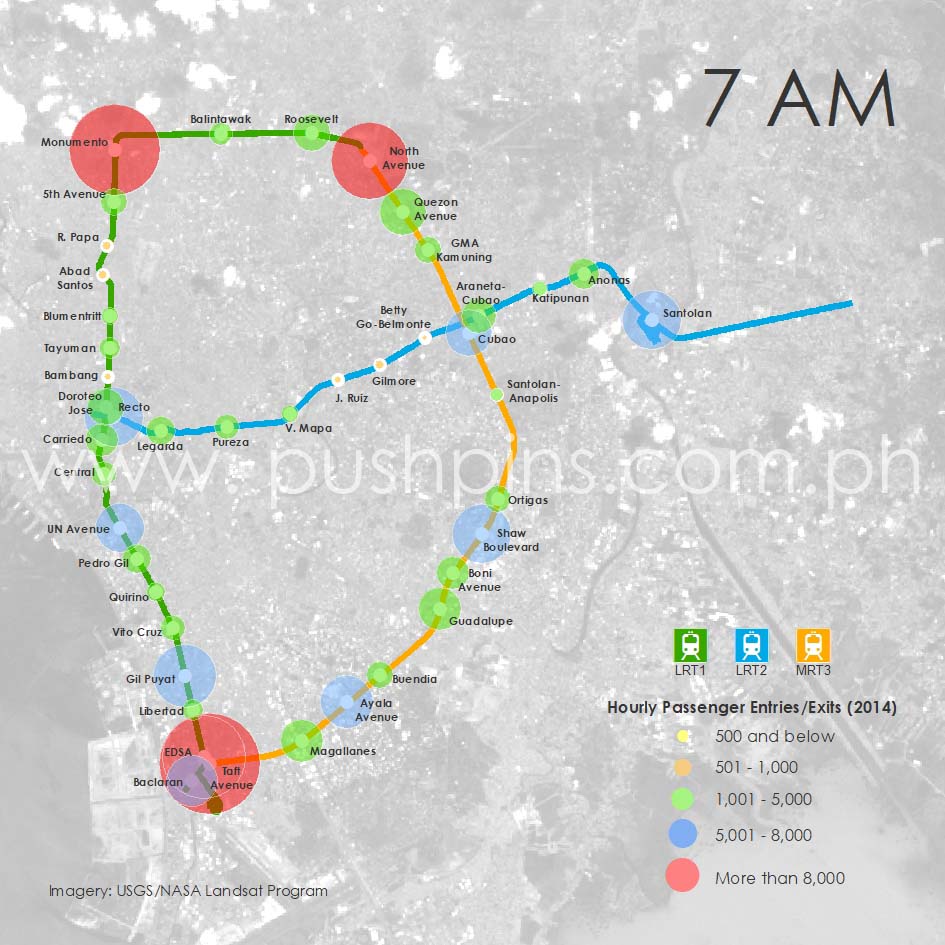
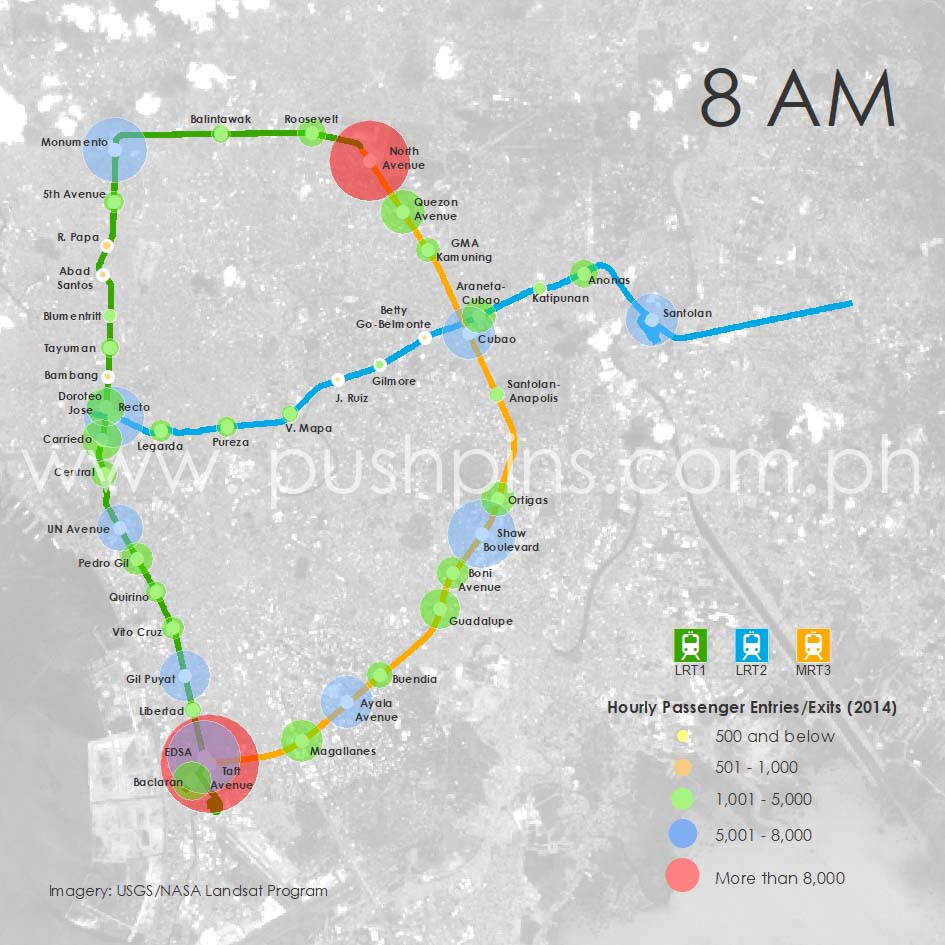
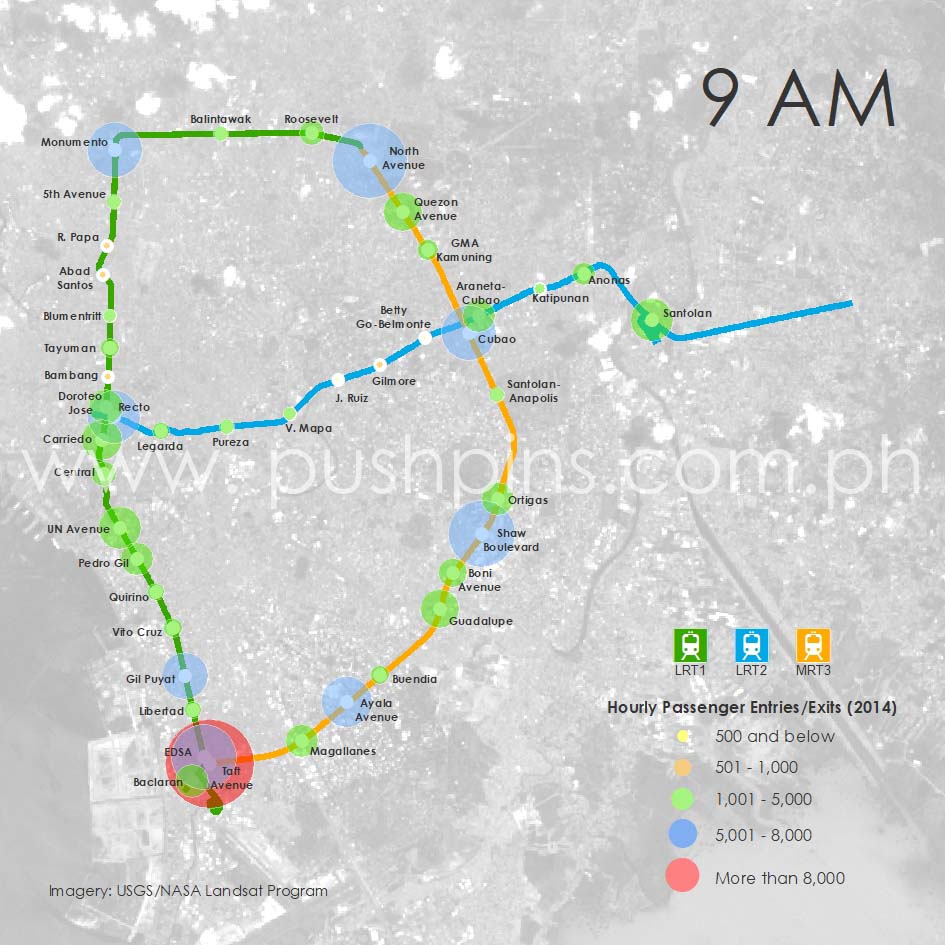
Getting a Breather
If you’re not in a hurry to get to your destination, it really is best to take the trains around lunch time. While the hourly passenger influx fluctuates, it generally increases in a slower rate. Be wary of Monumento (LRT1) and Taft Avenue (MRT3), though, as these stations have a higher degree of passenger movement that begins at lunch time and culminates in the afternoon rush hour. See the images below.
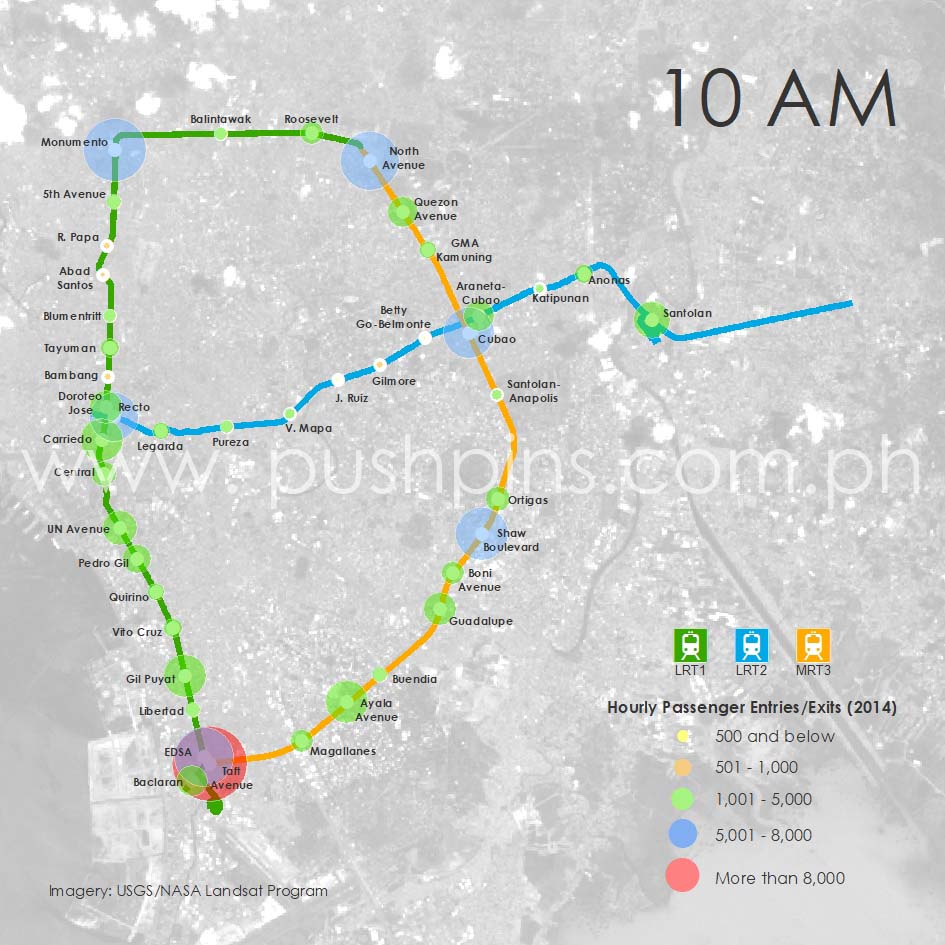
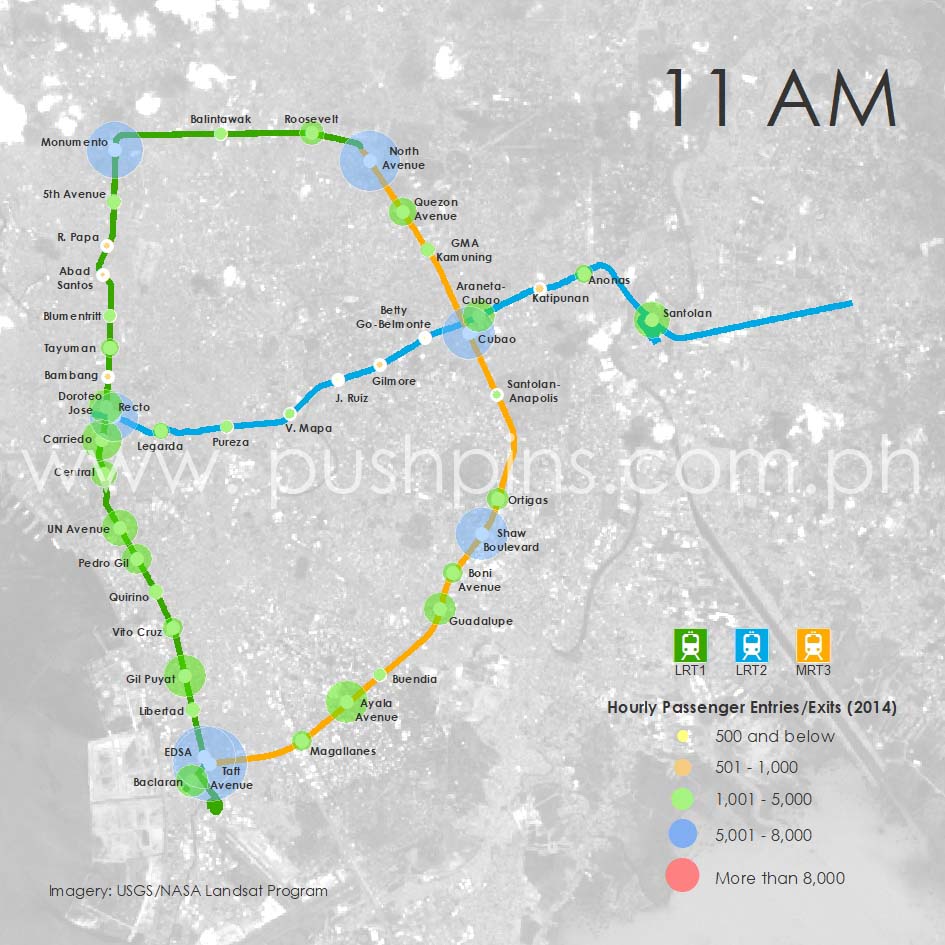
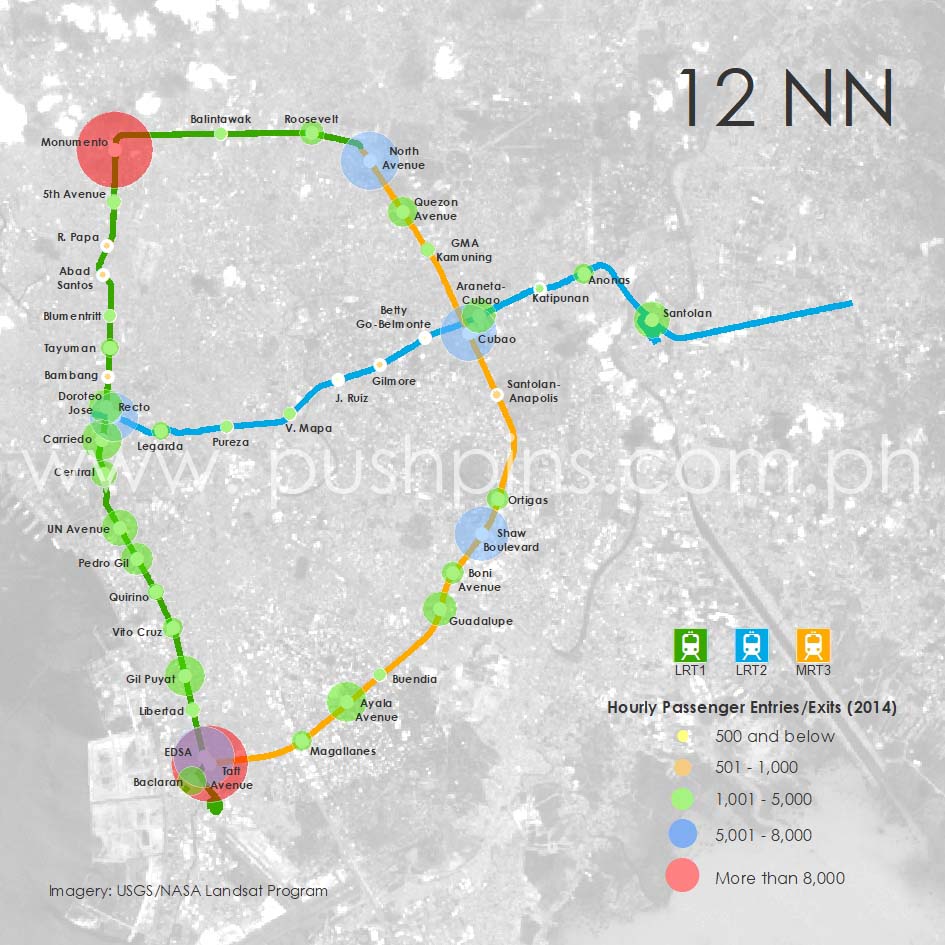
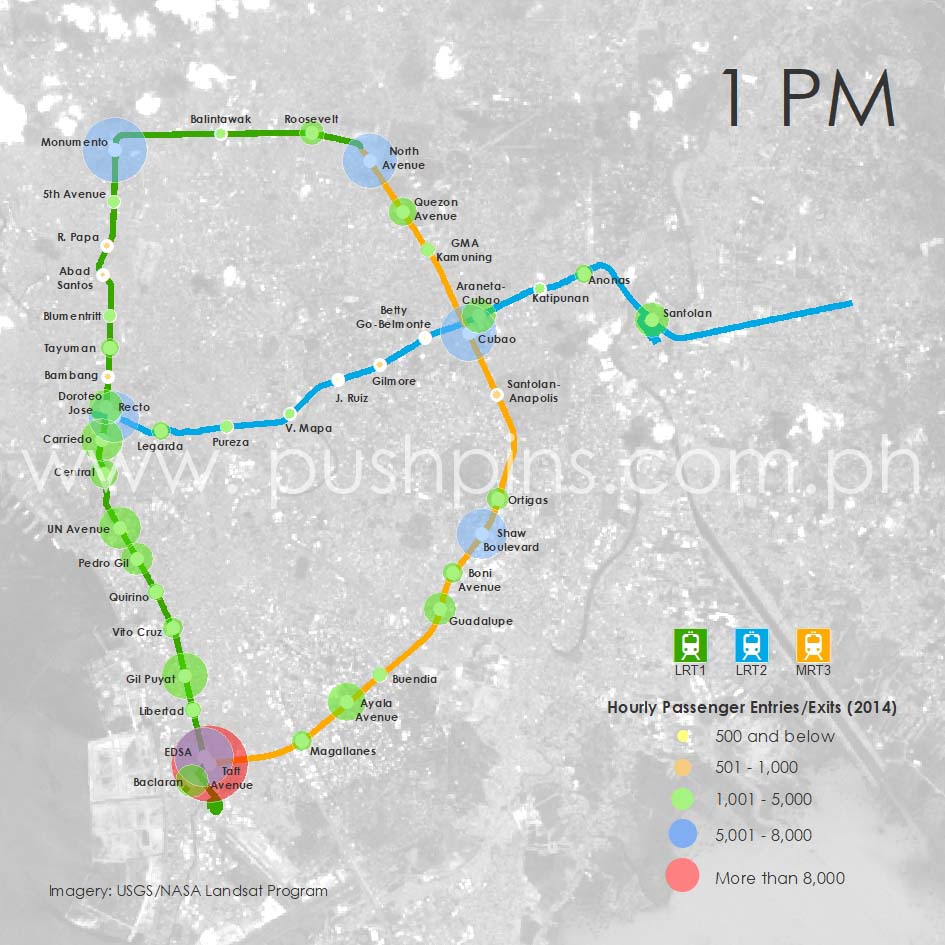
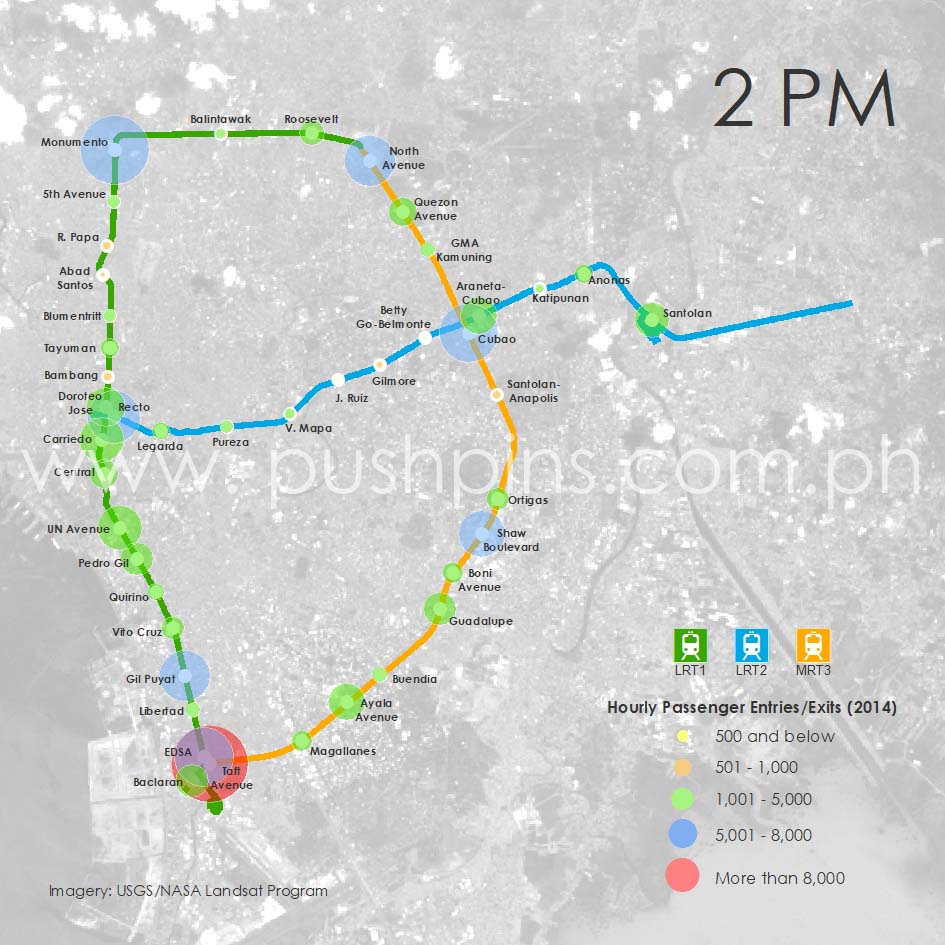
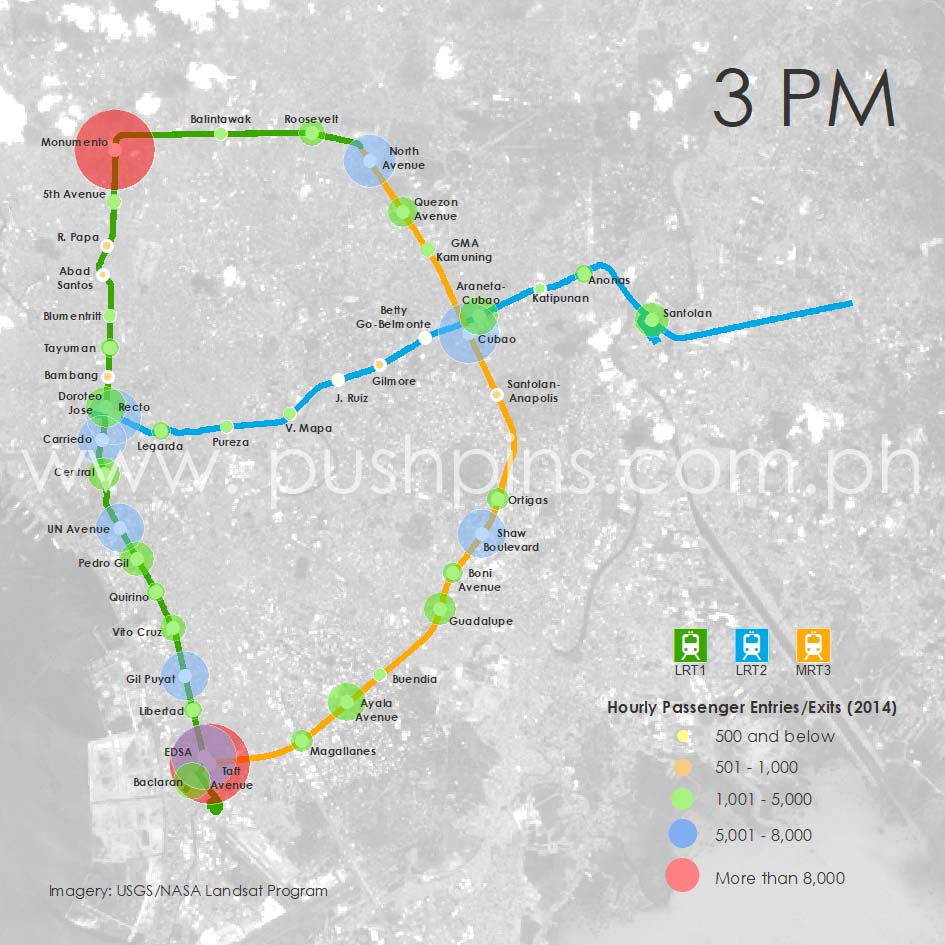
Home-bound
As expected, the transit systems are the busiest during the afternoon to evening rush hours. The 4pm to 8pm traffic, which peaks at 5pm, accounts for 28% of the day’s total, slightly edging its morning counterpart (26.5%). Most packed are Taft Avenue (MRT3), Monumento (LRT1), Cubao (MRT3), and North Avenue (MRT3) stations; while Betty Go-Belmonte (LRT2), J. Ruiz (LRT2), and Abad Santos (LRT1) stations have the slowest passenger traffic. The images below illustrate this.
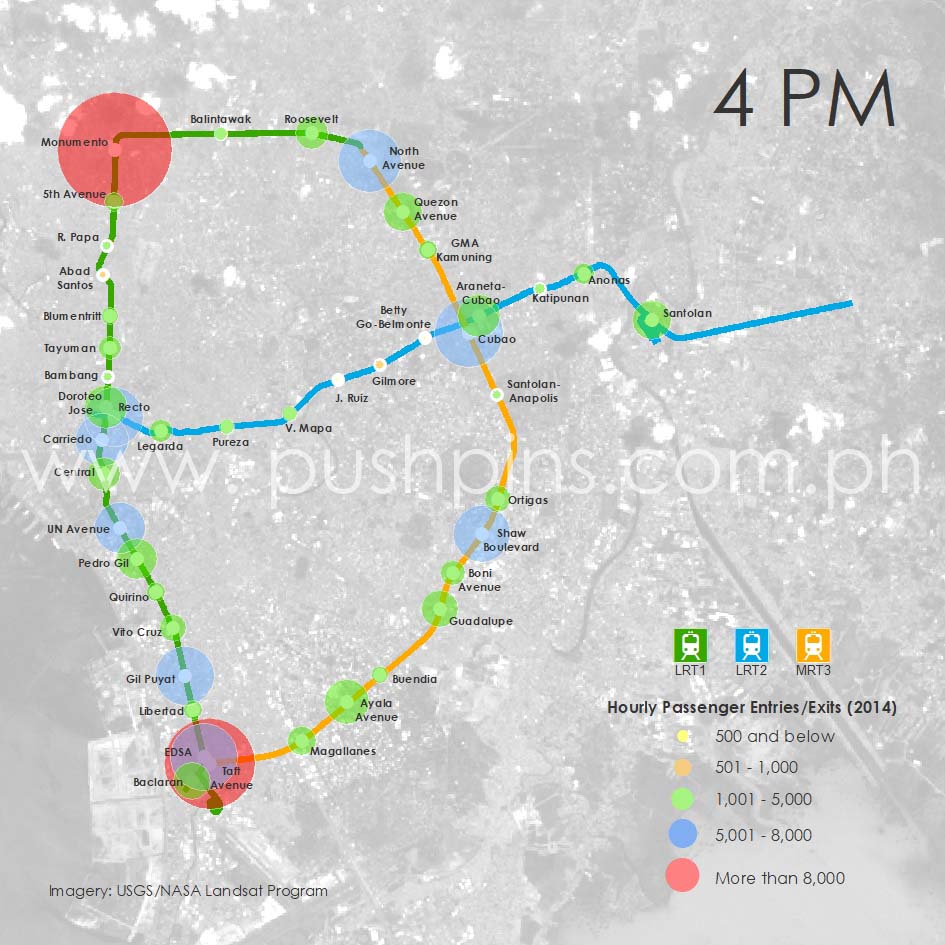

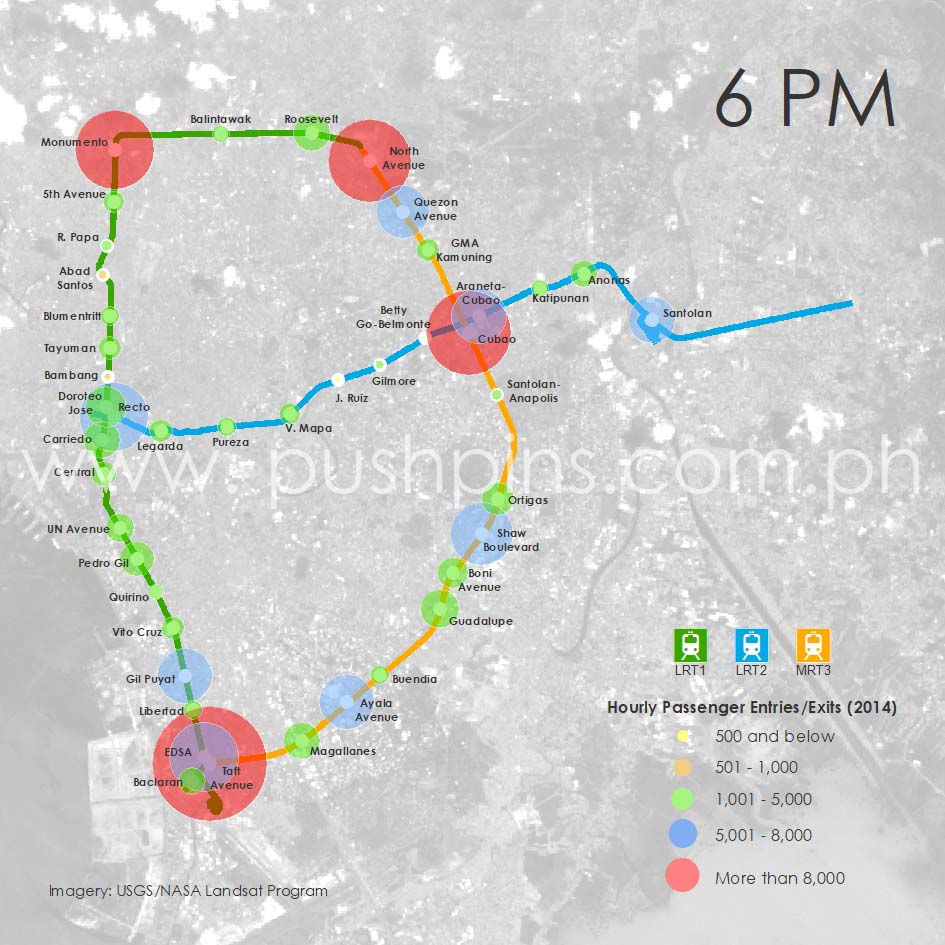
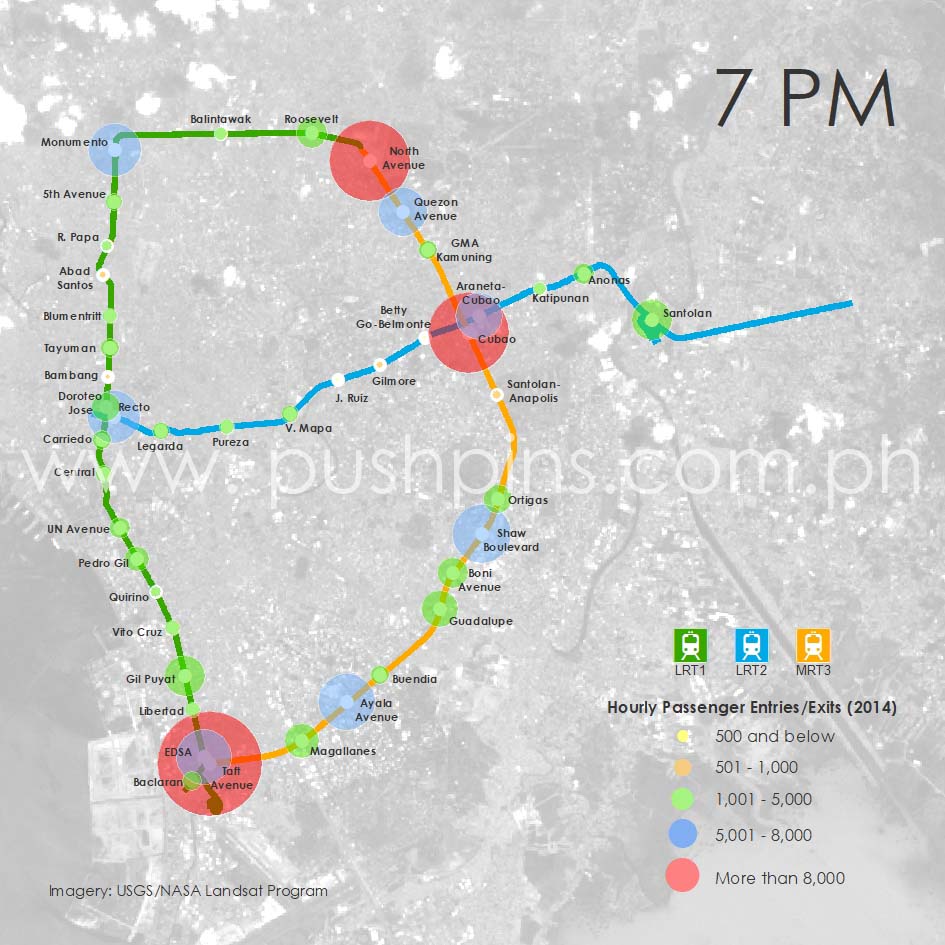
Naturally, the traffic goes to a steady decline towards the end of operations. Taft Avenue (MRT3) still tops the list of most active stations, followed by MRT3’s North Avenue, Cubao, Ayala Avenue, and Shaw Boulevard. Monumento (LRT1), which is one of the busiest during rush hours, becomes more forgiving. Click this set of images to see how passenger traffic slows down as the day ends.
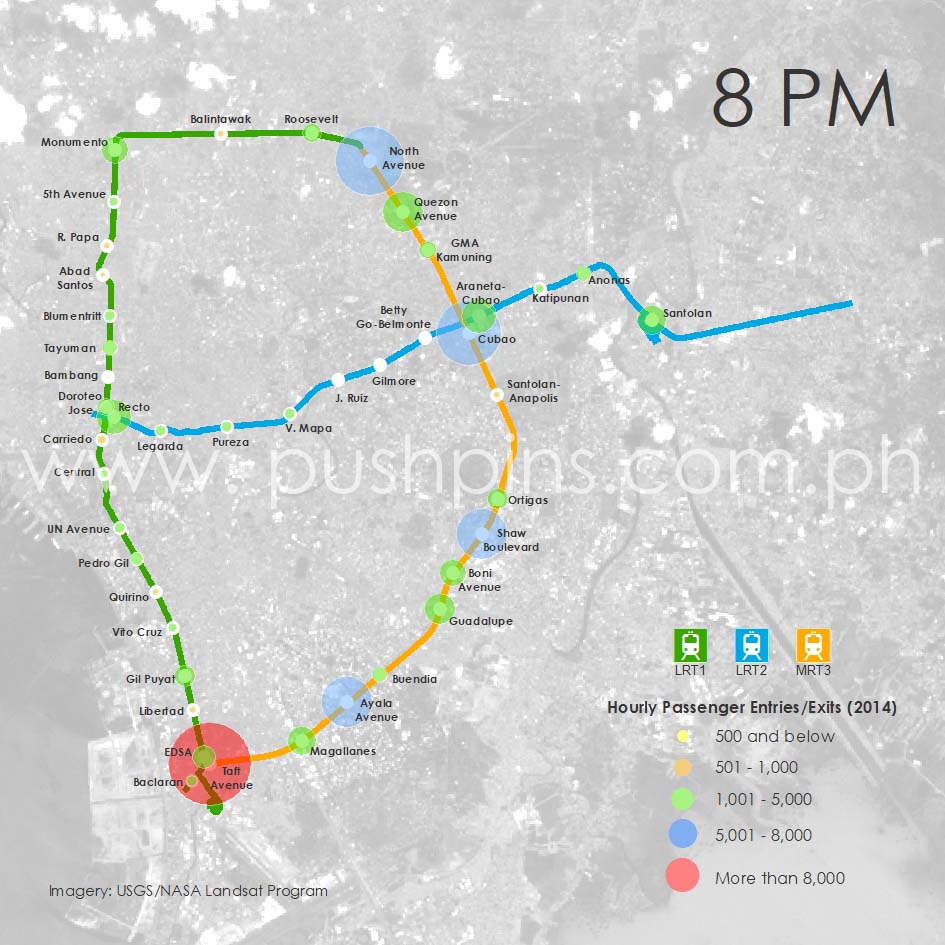
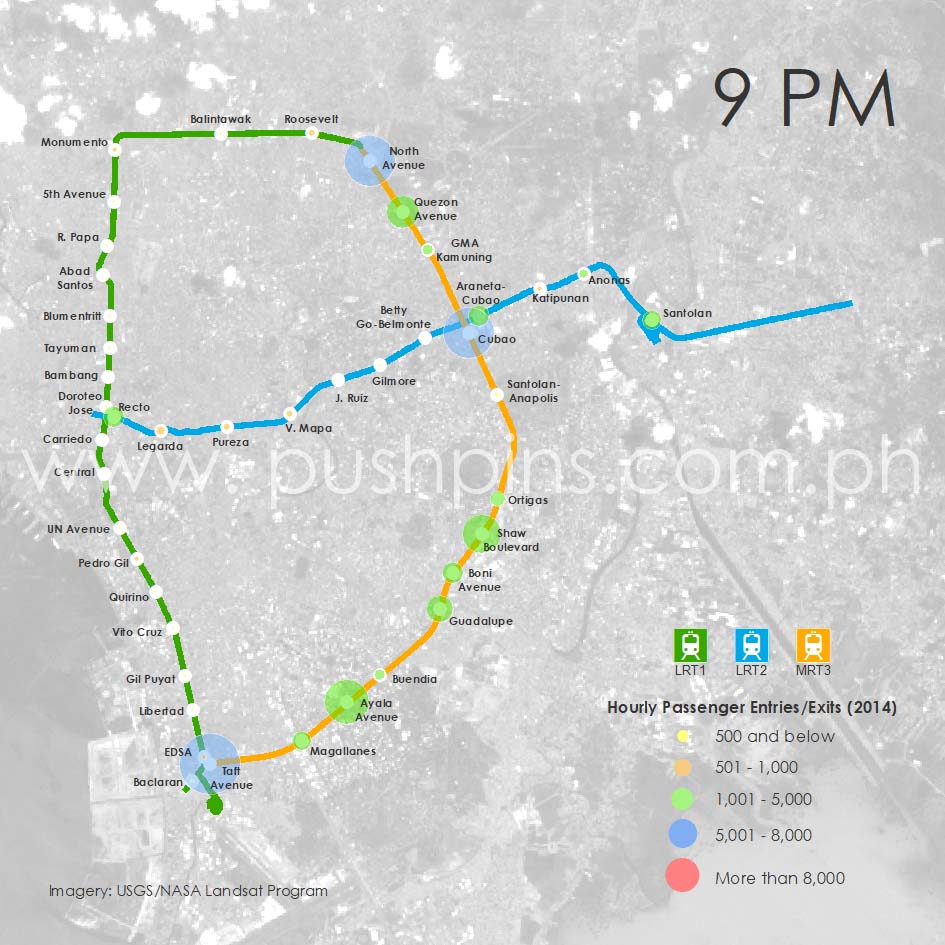

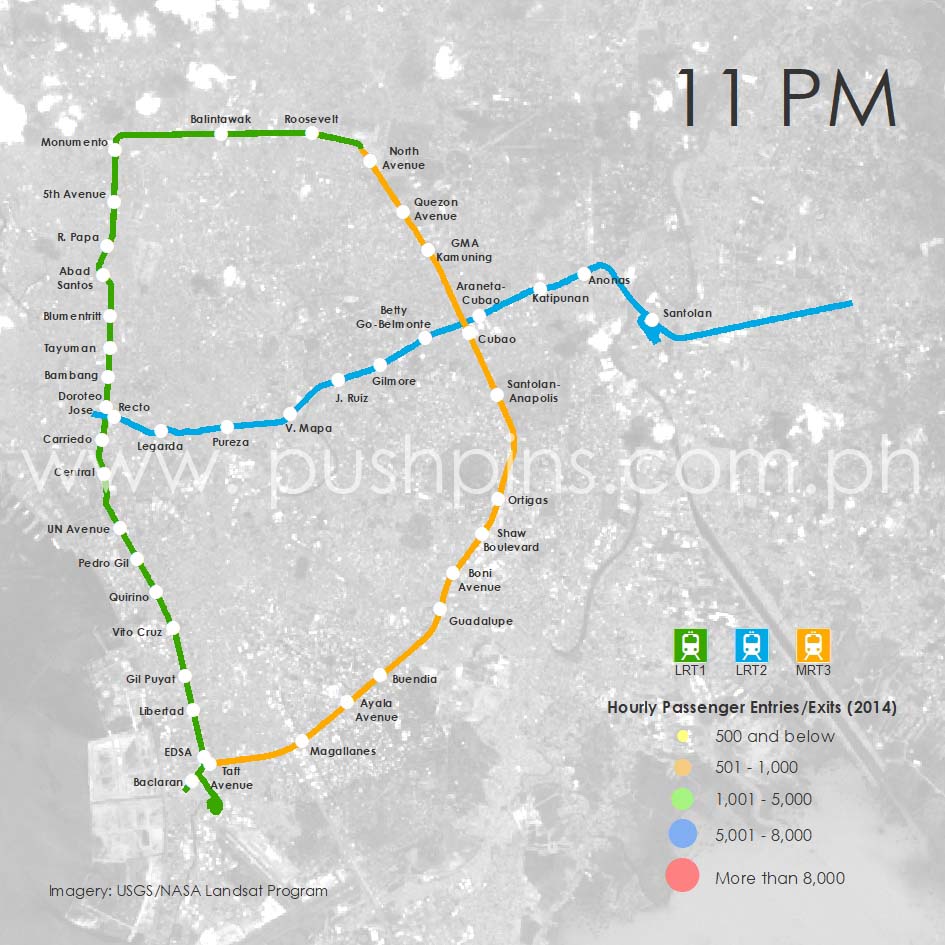
While these figures may not offer a complete picture of passenger traffic, it’s still best to take note of the exact times when these stations get pretty busy. Mapping the data validated some common perceptions, like Cubao being the consistently busiest of all stations. Still, a more detailed and up-to-date information will have yielded better analysis.
Commuting in Metro Manila is, without a doubt, a daily struggle, but arming yourself with the right information may help take on this challenge. And with the recent roll out of new MRT trains, commuters may hope to find a respite.
All information presented here are based on limited data available and are only meant for an overview of the subject. For in-depth analyses, an extensive study is necessary.
Pushpins is a GIS company based in the Philippines. For more information, log on here.

